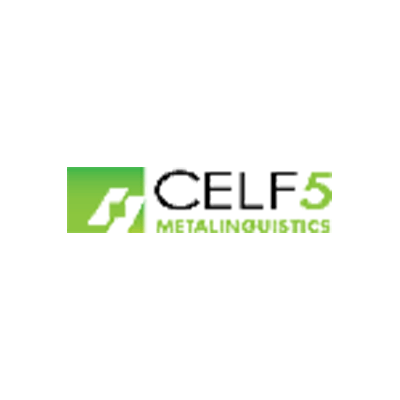Elisabeth H. Wiig, PhD, Wayne A. Secord, PhD
Overview:Assessment to measure higher-level language skills
Age Range:9:0–21:11
Scoring Option:Q-global™ (web-based) or manual scoring
Completion Time:Approximately 45 minutes for the Total Metalinguistics Score
Scores/Interpretation:Test and composite standard scores, percentile ranks, age equivalents growth scale values
Publication Date:2014
Assess Higher-Level Semantic and Pragmatic Language Skills
A revision of the Test of Language Competence-Expanded, the CELF-5 Metalinguistics assessment includes five tests of higher-level language skills that are embedded in upper-grade curricula and are critical to classroom success. Use the test to measure a student’s ability to think about and use language to make inferences, manipulate conversational speech given a context, use words in multiple ways, and use language in a non-literal manner.
Content & Administration
Screen higher level language skills using the Metalinguistics Profile, a 30 item rating scale you can use to examine a student’s metalinguistic skills in these areas: Words, Concepts and Multiple Meanings, Inferences and Predictions, and Conversational Knowledge and Use.
Administer these four tests individually or as a battery to obtain norm-referenced information about an individual’s language skills in:
- Making Inferences
- Conversation Skills
- Multiple Meanings
- Figurative Language
Features and Benefits
- Ideal for students with subtle language disorders or those on the autism spectrum
- Goes beyond assessment of syntax and semantics to assess student’s language strategies and language flexibility
- Includes several tests that assess the student’s ability to interpret contextual and situational demands of conversation, understand what is not explicitly stated in communication interactions, understand non-literal language
- Helps you evaluate delays in semantic, syntactic, and pragmatic competence
CELF-5 Metalinguistics Stimulus Book Pages


Examples of stimuli from the Conversation Skills Test
Digital Manual and Stimulus Books option
- The Examiner’s Manual and Stimulus Book are available on Q-global, our web-based system for scoring and reporting. Display the Manual or Stimulus Book on any web-enabled computer or tablet!
- Includes a full set of paper Record Forms
- Ideal for telepractice!
Digital Option Available
Q-global
Q-global is Pearson’s web-based system for accessing digital resources for assessment, scoring, and reporting. Use any web-enabled computer or tablet–ideal for face-to-face or telepractice assessments!
A CELf-5 Metalinguistics Digital Kit is available (including a digital Stimulus Book, digital Manual, and paper record forms). Scoring is purchased separately. You have the option to purchase an unlimited-use 1-, 3-, or 5- year scoring subscription or individual score reports. Quantity discounts are available.
Important note: Each scoring subscription is per user and will begin on the date the first subscription from the order is allocated to the user(s) in the Q-global account.
Soon after you place your order, you will receive an email informing you that your CELF-5 Metalinguistics digital Manual, Stimulus Book, and/or scoring are available on the Q-global platform. The paper Record Forms included in the Digital Kit will be shipped to you.
Other Pearson Clinical assessments available on Q-global include CELF-5, CELF-5 Metalinguistics, PPVT-4, EVT-2, GFTA-3, KLPA-3, and GFTA-3 Spanish. Learn more about Q-global pricing.
Sample Repots
Scoring and Reporting
Scoring and reporting options will be available through Pearson’s Q-global platform. Q-global offers:
- 24/7 secure, web-based access
- Portability: Q-global can be used on mobile devices such as a laptop or tablet
- On-demand, reliable scoring and comprehensive reporting solutions
- Pricing on a per-report basis
Related Information
- CELF-5 Metalinguistics Test Objectives and Descriptions
- CELF-5 Metalinguistics Sensitivity and Specificity Statistics
- CELF-5 Metalinguistics Evidence of Reliability
- CELF-5 Metalinguistics Technical Summary
- CELF-5 Metalinguistics Flyer
- Digital and Paper Options
Case Studies
- CELF®-5 Metalinguistics Case Study-Ana
- CELF®-5 Metalinguistics Case Study-David
- CELF®-5 Metalinguistics Case Study-Minh
Presentations
Upcoming Webinars
-
The Metalinguistic Bridge: Language Competence and Classroom Success
Presenter: Wayne Secord, Ph.D., CCC-SLP
Overview
The ability to use one’s communication and language system as a tool is an essential aspect of school-age language competence. This session will provide an overview of metalinguistic awareness, stages of development, and its impact on every-day classroom performance. Information about improving students’ metalinguistic skills and strategies will be presented using two case studies that utilize (1) the use and interpretation of the CELF-5 Test of Metalinguistics (Wiig and Secord, 2014) to assess metalinguistic competence, and (2) practical classroom-based assessment strategies to accurately describe the every-day things students struggle do, say, make and use in the school curriculum. Participants who attend this program will leave with new perspectives on clinical and educational assessment as well as with practical strategies they can put to use right away.
Learner Outcomes
After the completion of the webinar, participants will be able to:
- Illustrate how students with marginal oral language test scores might perform on the CELF-5 Test of Metalinguistics.
- Describe how students with poor to marginal metalinguistic skills might impact classroom-based language and learning.
- Describe how practical classroom assessment focuses on what students struggle to do, say, make and use in school.
Time-ordered Agenda
2:00 to 2:25 pm – Metalinguistic Ability (What it is; How Important is It?)
2:25 to 2:40 pm – Case Study Example – 3rd Grade Student
2:40 to 2:55 pm – Case Study Example – 8th Grade Student
2:55 to 3:00 pm – Question and Answer

This course is offered for 0.1 ASHA CEUs (Intermediate level, Professional area.)
Pre-recorded Webinars
-
CELF-5 Metalinguistics: Language Competence and Classroom Success
Presenter: Wayne A. Secord, PhD, CCC-SLP

School-age students need to use their communication and language system as a tool to master grade level curriculum. Students unable to do this, clearly risk being left behind. This program provided information on the assessment of metalinguistic competence and its overall impact on every-day classroom and curriculum-based performance difficulties and needs. Two case studies were presented.
Date: Sep 20, 2017
 PDF: CELF-5 Metalinguistics: Language Competence and Classroom Success
PDF: CELF-5 Metalinguistics: Language Competence and Classroom Success Video: CELF-5 Metalinguistics: Language Competence and Classroom Success
Video: CELF-5 Metalinguistics: Language Competence and Classroom Success -
Crossing the Bridge: Developing Metalinguistic Awareness and Strategies
Presenter: Elisabeth Wiig, Ph.D., CCC-SLP

Metalinguistic awareness is often underdeveloped in children with language disorders and learning disabilities and may require classroom and other interventions to foster metalinguistic abilities and strategic language use. This program will give a short overview of metalinguistic development followed by a case study that illustrates a multi-step process. Methods and strategies for developing critical thinking and semantic, syntactic, and conversational flexibility will be outlined and discussed with emphasis on the CELF-5 Metalinguistics test results. Methods and processes for developing critical thinking and semantic, syntactic and conversational flexibility and strategies will be outlined and discussed. Participants will acquire new perspectives of metalinguistics and strategic language use and obtain immediately applicable templates for implementing the methods and strategies discussed.
Date: Nov 09, 2016
 PDF: Crossing the Bridge: Developing Metalinguistic Awareness and Strategies
PDF: Crossing the Bridge: Developing Metalinguistic Awareness and Strategies Video: Crossing the Bridge: Developing Metalinguistic Awareness and Strategies
Video: Crossing the Bridge: Developing Metalinguistic Awareness and Strategies -
CELF-5 Metalinguistics: Language Competence and Classroom Success
Presenter: Wayne A. Secord, PhD, CCC-SLP

The ability to use one’s communication and language system as a tool is an essential aspect of school-age language competence. This session will provide an overview of metalinguistic awareness, stages of development, and its impact on every-day classroom performance. Information about improving students’ metalinguistic skills and strategies will be presented using two case studies that utilize the use and interpretation of the CELF-5 Test of Metalinguistics (Wiig and Secord, 2014) to assess metalinguistic competence, and practical classroom-based assessment strategies to accurately describe the every-day things students struggle do, say, make and use in the school curriculum. Participants who attend this program will leave with new perspectives on clinical and educational assessment as well as with practical strategies they can put to use right away.
Date: Sep 22, 2016
 PFD: CELF-5 Metalinguistics: Language Competence and Classroom Success
PFD: CELF-5 Metalinguistics: Language Competence and Classroom Success PDF: Case Studies – CELF-5 Metalinguistics: Language Competence and Classroom Success
PDF: Case Studies – CELF-5 Metalinguistics: Language Competence and Classroom Success Video: CELF-5 Metalinguistics: Language Competence and Classroom Success
Video: CELF-5 Metalinguistics: Language Competence and Classroom Success -
The Metalinguistic Bridge: Paying the Toll for Classroom Success
Presenter: Elisabeth Wiig, PhD, CCC-SLP, Wayne Secord, Ph.D., CCC-SLP

The ability to use one’s communication and language system as a tool is an essential aspect of school-age language competence. Students must be able to pay the toll at the “Metalinguistic Bridge” or risk being left behind. This program will provide a strong background on metalinguistic ability including (1) metalinguistic awareness, (2) stages of development, (3) performance difficulties and needs, and (4) strategies for improving metalinguistic skills and strategies. The seminar will conclude with an interesting case study example that utilizes effective classroom-based assessment and the CELF-5 Test of Metalinguistics (Wiig and Secord, 2014) to guide the intervention planning process. Participants who attend this program will leave with new perspectives on clinical and educational assessment as well as with practical strategies they can put to use right away. Join us for a truly engaging experience.
Date: Apr 13, 2016
 Video: The Metalinguistic Bridge: Paying the Toll for Classroom Success
Video: The Metalinguistic Bridge: Paying the Toll for Classroom Success -
The Importance of Being Meta!
Presenter: Wayne A. Secord, PhD, CCC-SLP

The ability to use one’s communication and language system as a tool is an essential aspect of school-age language competence. Students pay the toll at the “Metalinguistic Bridge” or risk being left behind. This program will provide an overview of the CELF-5 Test of Metalinguistics (Wiig & Secord, 2014). This new assessment instrument is designed to identify students 9-21 years old who have not acquired the expected levels of metalinguistic ability for their age.
Date: Sep 18, 2015
-
The Importance of Being Meta!
Presenter: Wayne A Secord, PhD, CCC-SLP

The ability to use one’s communication and language system as a tool is an essential aspect of school-age language competence. Students pay the toll at the “Metalinguistic Bridge” or risk being left behind. This program will provide an overview of the CELF-5 Test of Metalinguistics (Wiig & Secord, 2014). This new assessment instrument is designed to identify students 9-21 years old who have not acquired the expected levels of metalinguistic ability for their age. Case studies of school-age students whose scores on oral language assessments fall in the low average, marginal, or at-risk range will be used to illustrate the importance of being “meta” in school-based learning. Participants will leave with program with practical strategies they can put to use right away.
Date: Mar 24, 2015
-
Using the CELF-5 Metalinguistics Battery to Assess Higher Level Language Skills
Presenter: Adam Scheller, PhD

This webinar will provide an overview of CELF-5 Metalinguistics, a revision of the Test of Language Competence-Expanded (TLC-E). Students who have learned basic semantic and grammar skills may still have subtle language deficits which interfere with their ability to keep up with classroom peers. Descriptions of individual tests and current research will be provided.
Learning Outcomes
At the completion of the webinar, participants will be able to:
- Describe the purpose of the CELF-5 Metalinguistics test.
- List at least three tests that comprise the CELF-5 Metalinguistics battery.
- Name at least on way that CELF-5 Metalinguistics differs from the Test of Language Competence-Expanded (TLC-E)
- Describe a clinical situation in which administering one of the CELF-5 Metalinguistics tests to a student may not provide accurate information about a student’s language skill.
Date: May 29, 2014
 Video: Using the CELF-5 Metalinguistics Battery to Assess Higher Level Language Skills
Video: Using the CELF-5 Metalinguistics Battery to Assess Higher Level Language Skills







